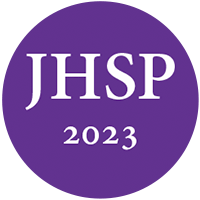The professional home for health service psychologists.
Join a community of 15,000 psychologists and trainees.
Learn it today. Apply it tomorrow.
Connecting you to what you need in your career.
Making a difference.
Smith, S. R. (2017). Supreme court 2016–2017: A new justice and term of surprising importance. Journal of Health Service Psychology, 43, 83–95.
The 2016–2017 Supreme Court session included rulings on professional practice issues and social justice matters. Two cases involved educational opportunities for handicapped children, and three cases involved psychological practice standards related to death penalty situations. Arbitration clauses in healthcare agreements were ruled binding. It was determined that both parents can be listed on birth certificates in same-sex families. Seventy percent of all rulings during the term were unanimous.
The Endnotes include links to all of the cited cases as well as additional information about the cases and the statutes cited by the cases. It also provides information about locating materials about the Supreme Court.
The author thanks Larry Benner, Stephanie Brasfield, Eric Drogin, Morgan Sammons, Glenn Smith, and Lera Smith for their reviews and helpful insights. The errors that remain must be the result of not having taken their advice.
For most of the cases and many other citations, clicking on the citation will take the reader to the original material.
U.S. Supreme Court decisions are readily available (and free) on the Court’s website. It is www.supremecourtus.gov. The website for the opinions for this Term is http://www.supremecourt.gov/opinions/slipopinions.aspx. Any of the cases discussed in this article are available from that source and interested readers are urged to look at that website to review the cases. This article gives the direct link to cases decided this Term. By clicking on the name of the case for cases decided this Term, you should be taken to the official internet site for the opinion of the Court and any concurring and dissenting opinions. (Some computers may require pressing <ctrl> while clicking.)
Anyone who is interested can also sign up for free same-day, digested notification of the decisions of the Supreme Court. The website is: http://www.law.cornell.edu/bulletin. An excellent site for all things Supreme Court is SCOTUSblog at http://www.scotusblog.com/.
The citations in this article are to the Slip Opinions of the Court as published on the Court’s web site. Readers should note that in Slip Opinions the Court separately paginates each opinion within a case. Therefore, in a case the majority opinion begins on page one, a concurring opinion will again begin on page one, and a dissenting opinion will once again begin on page one. When opinions are published in hard copy in the U.S. Reports and other bound sources, however, pagination is continuous.
[1] In American history, it was not exceptional for the Senate to fail to confirm a Supreme Court nominee in the last year of a president’s final term (particularly when the Senate and President were in the hands of different parties). Of the approximately 155 nominations to the Court, 30 have not been confirmed (starting with George Washington in 1795). By my count, the Senate has “postponed” or failed to act on nine nominees, and another seven nominees have withdrawn. The Senate has rejected 12 nominees. Nearly half of the failed nominations have occurred in the President’s last year in office.
In the last 100 years, only one nominee was rejected in the 50 years between 1917 and 1967, only one nominee was rejected (John Parker, nominated by President Hoover in 1930). That easy sailing changed in the most recent 50 years. From 1967 to the present, seven nominees have been rejected (Abe Fortas, nominated by President Johnson from Associate Justice to Chief Justice; Clement Haynsworth and Harrold Carswell, nominated by President Nixon; Robert Bork and Douglas Ginsburg, nominated by President Reagan; Harriet Miers, nominated by President Bush; and Merrick Garland, nominated by President Obama. Arguably there was an eight, Homer Thornberry, who was slated to take the position of Abe Fortas, but the Fortas position was not vacated.)
[2] Senate filibusters had been precluded on all other federal judges since 2013—which was the first Nuclear Option. In 2013, the Senate majority (Democratic at the time) changed the Senate rules to preclude the filibuster for judicial nominees except Supreme Court nominees (there were no Supreme Court nominees at the time). They did so in frustration for fact that many judicial nominees were being blocked by the Republicans, then in the minority. Changing the Senate Rules so dramatically was commonly described as the “Nuclear Option” both when done in 2013 and in 2017. Paul Kane, Reid, Democrats Trigger “Nuclear” Option; Eliminate Most Filibusters on Nominees, Washington Post (November 21, 2013), available at https://www.washingtonpost.com/politics/senate-poised-to-limit-filibusters-in-party-line-vote-that-would-alter-centuries-of-precedent/2013/11/21/d065cfe8-52b6-11e3-9fe0-fd2ca728e67c_story.html?utm_term=.fd25f2d6b46d, archived at https://perma.cc/T3QW-RSEY. [3] Because the first oral argument that included Justice Gorsuch was on April 17. He participated in approximately 16 cases that were heard after he joined the Court. [4] Some high courts intentionally operate with even numbers of justices. The purpose of that is to encourage the court to reach consensus, look for common ground, and provide for narrow holdings. The Supreme Court of Ireland is an example of this arrangement. [5] The Court selects its cases through “Writs of Certiorari.” It commonly accepts about one percent of the cases appealed to it. [6] Kindred Nursing Centers, L. P. v. Clark, decided May 15, 2017. In a 7-1 decision, Justice Kagan wrote for the Court. Justice Thomas dissented. (Justice Gorsuch did not participate in the case. Unless noted otherwise, in cases with only eight justices participating, it means that Justice Gorsuch did not participate.) [7] Endrew F. v. Douglas County School Dist. RE–1, decided March 22, 2017. This was a unanimous decision. Chief Justice Roberts wrote for the Court.[8] Fry v. Napoleon Community Schools, decided February 22, 2017. It was a unanimous decision, although Justices Alito and Thomas wrote a concurring opinion to express concern about one part of the Court’s decision. [9] McWilliams v. Dunn, was decided June 19, 2017. Justice Breyer wrote for the majority. Justice Kennedy was considered the deciding vote, with Justices Alito writing a dissent in which Chief Justice Roberts, and justices Thomas and Gorsuch joined. Buck v. Davis, decided February 22, 2017 (involving the extraordinarily inappropriate testimony of a defense psychologist). Chief Justice Roberts wrote for the six-justice majority; Justices Thomas and Alito were in dissent.[10] Moore v. Texas, decided March 28, 2017 (involving the appointment of mental health experts in capital cases). Justice Ginsburg wrote for the five-justice majority. Chief Justice Roberts wrote a dissent, joined by Justices Thomas and Alito.[11] Packingham v. North Carolina, decided June 19, 2017. Justice Kennedy wrote for a unanimous Court (concurrences were filed by Justice Alito, joined by Chief Justice Roberts and Justice Thomas). [12] Pena-Rodriguez v. Colorado, decided March 6, 2017. This was a 5-3 decision, with Justice Kennedy writing for the majority. Justice Alito filed a dissenting opinion, joined by Chief Justice Roberts and Justice Thomas. [13] The facts are more thoroughly explained in the Kentucky Supreme Court opinion, Extendicare Homes v. Whisman, 478 S. W. 3d 306 (Ky. 2015) available at http://www.scotusblog.com/wp-content/uploads/2016/07/16-32-Op-Bel-Ky.pdf, archived at https://perma.cc/RWH2-MR58 . [14] These arbitration agreements were imbedded in lengthy “alternative dispute resolution” documents described in detail in the Kentucky opinion cited above. The admitting paperwork for the care homes indicated that signing the mandatory arbitration agreement was not necessary in order to be admitted to the home. [15] Kindred Nursing Centers, L. P. v. Clark was decided on 15, 2017. It was a 7-1 decision, with Justice Kagan writing for the Court. Justice Thomas dissented. [16] The FAA is codified at 9 U.S.C §2. It provides in part that, “A written provision in any maritime transaction or a contract evidencing a transaction involving commerce to settle by arbitration a controversy thereafter arising out of such contract or transaction, or the refusal to perform the whole or any part thereof, or an agreement in writing to submit to arbitration an existing controversy arising out of such a contract, transaction, or refusal, shall be valid, irrevocable, and enforceable, save upon such grounds as exist at law or in equity for the revocation of any contract.” Id. [17] The center was essentially urging the Court to overturn the Kentucky law limiting the ability of agents to waive litigation rights The Kentucky Supreme Court had held that under the Kentucky Constitution, the agents could not waive the right to litigation by signing the arbitration agreement.[18] Kindred, supra. [19] The argument that the agent could not enter into arbitration contracts for their principals was rejected by the Court. However, in the case of Wellner, there was a special circumstance. As a general matter of law, an agent cannot usually exceed the authority granted by the power of attorney. It was not clear that the power of attorney in the Wellner case was broad enough to authorize the agent to agree to a pre-dispute arbitration agreement. For that reason, the Court returned Wellner to the lower court to determine whether the agent did have the authority to enter into an arbitration agreement. [20] Id. at 5. [21] An example of bias is where one of the parties (a company or hospital, for example) selects arbitrators frequently, but the other party (an individual) may select an arbitrator from a panel only once. Arbitrators would know that and even if well intentioned, there is a risk that needing to please one side would affect the judgment. In labor arbitration where both the union and the company are both repeatedly using a pool of arbitrators, that bias not as likely to appear because both sides have to be satisfied with an arbitrator. [22] This can be important where an institution harms a lot of people a little bit, as when a hospital tacks on a $75 “dismissal fee” to those leaving the hospital. In those cases, no single person is going to spend the money to pursue restitution. That leaves the injured without an effective judicial remedy. In some instances, of course, they may be able to file complaints with regulatory agencies. [23] Kindred, Justice Thomas, dissenting. [24] They were fortunate to be able to opt out by simply rejecting the arbitration agreement. It is usually not so easy. In many negotiated agreements, one party can simply negotiate out of that provision, perhaps by suggesting that the parties should, post-dispute, endeavor in good faith to resolve the differences, perhaps using mediation or arbitration. The more one party can impose a contract without negotiation, the more difficult it is to be able to change arbitration clauses. In contracts of adhesion, such as “click through” terms of service, it is impossible to change those terms. [25] Among other things, requiring an arbitration agreement to obtain care may be seen as a contract of adhesion that is unconscionable, or may be seen as inconsistent with the strong obligation of professionals to treat clients and patients with good faith. [26] 20 U.S.C. §1400 et seq. Those working with disabled and challenged students generally feel that the IDEA is the critical law for providing educational opportunities and support for those students. [27] Justice Kagan correctly noted the acronym-rich of IDEA and related laws. “To avoid confusion—and acronym overload— we refer throughout this opinion only to the IDEA.” Fry at 2. “Welcome to—and apologies for—the acronymic world of federal legislation.” Id. [28] There are detailed federal regulations about the process for putting together the IEPs, and about the content of the plans. 20 U. S. C. §1400, in particular §1414(d)(1)(B). [29] 20 U.S.C. §1401(9). [30] 20 U.S.C. §§1414(d)(1)(A)(i)(I)–(III). [31] Endrew F. v. Douglas County School Dist. RE–1, decided March 22, 2017. Chief Justice Roberts wrote the opinion for a unanimous Court (8-0). [32] Id. at 14-15. [33] This had been announced by the Court in an earlier decision. Board of Education of Hendrick Hudson Central School District v. Rowley, 458 U. S. 176, 203-204 (1982). [34] In reaching this conclusion, the Court rejected two alternative approaches: that (1) only slightly “more than de minimis” is enough, and (2) that achievement “substantially equal to that afforded to children without disabilities” is appropriate—the first of those being not enough, and the second more than IDEA requires. Endrew F. at 14-15. [35] “By the time any dispute reaches court, school authorities will have had a complete opportunity to bring their expertise and judgment to bear on areas of disagreement. A reviewing court may fairly expect those authorities to be able to offer a cogent and responsive explanation for their decisions that shows the IEP is reasonably calculated to enable the child to make progress appropriate in light of his circumstances.” Id. at 16. [36] The “in light of his circumstances” is a critically important part of the legal test. The severity of a disability, for example, influences what the reasonable expectations are for progress in the coming year. [37] Fry v. Napoleon Community Schools , decided February 22, 2017. This was a unanimous, 8-0, decision. Justice Kagan wrote the opinion for the Court. [38] The relevant section of the statute provides, “Nothing in [the IDEA] shall be construed to restrict or limit the rights, procedures, and remedies available under the Constitution, the [ADA], title V of the Rehabilitation Act [including §504], or other Federal laws protecting the rights of children with disabilities, except that before the filing of a civil action under such laws seeking relief that is also available under [the IDEA], the [IDEA’s administrative procedures] shall be exhausted to the same extent as would be required had the action been brought under [the IDEA].” 20 U.S.C. §1415(l). Ironically, this language resulted from Congress trying to correct ambiguous language from the original statute. See Smith v. Robinson, 468 U. S. 992, 1010 (1984). [39] Fry at 6.[40] The Frys complained to the Department of Education’s Office of Civil Rights, that the exclusion of E.F.’s “service animal violated her rights under Title II of the ADA and §504 of the Rehabilitation Act. Following an investigation, OCR agreed.” The school, in response to this finding, then agreed to allow Wonder to join E.F. in the school. The parents were concerned that the school administration would “resent’ E.F. and make her return to school difficult. Id.at 7. [41] Id. at 14-18. [42] Id. at 15-17.[43] Id.at 17-18. Justices Alito and Thomas issued a concurring opinion to emphasize their view that these questions were not as informative as the majority thought. Fry, Justice Alito, concurring at 1. [44] Ake v. Oklahoma, 470 U. S. 68 (1985).[45] Ake at 83. (Emphasis added to note that the state is required to provide the assistance for the indigent defendant.) [46] The amicus brief offered to the Court by the American Psychological Association and American Psychiatric Association and others noted, “The Court in Ake referred specifically to a psychiatrist because that was what Ake’s counsel requested before trial. Ake is universally understood, however, to encompass qualified psychologists and other mental health experts. APA Brief at 5, note 2. [47] McWilliams v. Dunn, was a 5-4 decision, with Justice Breyer writing for the majority and Justice Kennedy considered the deciding vote. Chief Justice Roberts and Justices Alito, Thomas, and Gorsuch dissented. [48] The third member of the Lunacy Commission did not testify and was not identified by the Court. [49] Dr. Norman Poythress is a distinguished psychologist, not a psychiatrist. http://intra.cbcs.usf.edu/PersonTracker/common/file/cv-699.pdf. The Court indicated that he testified at trial. “Dr. Poythress testified that one of the tests that McWilliams took was ‘clinically invalid’ because the test’s ‘validity scales’ indicated that McWilliams had exaggerated or faked his symptoms.” McWilliams, majority opinion at 4. [50] Id. at 7. [51] The details of the trial are set out on pages 4-9 of the opinion at https://www.supremecourt.gov/opinions/16pdf/16-5294_h3dj.pdf . [52] Id. at 2. [53] Id.at 13. [54] Justice Alito, joined by Chief Justice Roberts, and Justices Thomas and Gorsuch, dissenting. The Court accepts cases through a Writ of Certiorariprocess. The Court denies the vast majority of cases it is asked to review. When it does accept a case, it defines precisely what questions are or can be addressed. [55] Given the rules and traditions of the Court, that seemed quite implausible. The Court’s rules specify that the Court will consider only the question on which review is granted and “subsidiary questions.” Rules 14 and 24 of the Court. It rarely considers questions not presented. The dissent noted that the Court enforces these rules. Justice Alito, dissenting, at 12.
However, a review of the petition for certiorari and the granting of the petition do, indeed, confirm the claim. “The questions presented are: (1) When this Court held in Ake that an indigent defendant is entitled to meaningful expert assistance for the ‘evaluation, preparation, and presentation of the defense,’ did it clearly establish that the expert should be independent of the prosecution? (2) Did the Alabama courts unreasonably apply Akein finding that McWilliams’s rights were satisfied when the only mental health expert he was provided distributed his report to all parties just two days before sentencing and was unable to review voluminous medical and psychological records?” McWilliams v. Dunn, Petition for Writ Certiorari (July 15, 2016) at i, available at http://www.scotusblog.com/wp-content/uploads/2017/01/16-5294-cert-petition.pdf . On January 13, 2017, the petition for a writ of certiorari granted, “limited to Question 1 presented by the petition.” Scotusblog.com at http://www.scotusblog.com/case-files/cases/mcwilliams-v-dunn/. The majority responded to the dissent’s claim in a rather weak way. McWilliams, majority opinion at 14. The majority did not make it clear, for example, why it rejected the question it was going to answer. The briefs requesting and opposing certiorari made the facts of the case sufficiently clear that the Court must have known what the real issues were.
[56] The technical problem involves the Antiterrorism and Effective Death Penalty Act of 1996 in which Congress substantially limited the use of habeas corpus petitions (which this was). There was concern in the 1970s-1990s that the federal courts were using the habeas corpus process to interfere too much in state court criminal process. The Supreme Court had been using that process to announce entirely new constitutional principles to which the state courts would be subject. The statute prohibits the federal courts from granting habeas relief unless the state action “was contrary to, or involved an unreasonable application of, clearly established Federal law, as determined by the Supreme Court of the United States.” 28 U. S. C. §2254(d)(1). In short, this requires that there already be a clearly enunciated specific federal right that was clearly violated. The problem for the majority was that the legal question on which the Court granted certiorari (essentially, was the expert provided required to be a member of the defense team) did not have a clearly enunciated federal decision, so under the statute, the Court could not announce the new principle in this habeas case.
The reason the Court rejected the other question, the one it actually decided (essentially, did the trial court engage in general misconduct regarding reports of the experts and the request for assistance) is probably that it is of the type that requires a detailed factual analysis, which the Court is not particularly well-positioned to do.
[57] It may also have been that having accepted the question of the mental health professional as a member of the defense “team” it came down to the fact that there were not five votes for that proposition and the majority simply fell back to answer a different question as a way of avoiding letting the death penalty stand. [58] Amicus Curiae Brief of the American Psychiatric Association, American Academy of Psychiatry and the Law, and American Psychological Association, in the case of McWilliams v. Dunn, available at http://www.apa.org/about/offices/ogc/amicus/mcwilliams.pdf.[59] “Defense counsel indicated that he could not fairly represent the defendant without the assistance of an expert. Had such assistance been provided, the trial judge might have concluded that, whether or not the defendant was malingering, his mental illness was a mitigating factor. Malingering is not inconsistent with serious mental illness; it is not clear that the trial court was aware of this fact. See Mary Alice Conroy & Phylissa P. Kwartner, Malingering, 2 Applied Psychol. Crim. Just. 29, 30-31 (2006)12 (‘Malingering and mental illness are not mutually exclusive phenomena.’).” Amicus brief at 20. [60] “If McWilliams had the assistance of an expert to explain that ‘[m]alingering is not inconsistent with serious mental illness,’” Brief for American Psychiatric Association et al. as Amici Curiae 20, he might have been able to alter the judge’s perception of the case.” McWilliams, majority opinion at 16. [61] Buck v. Davis, was a 6-2 decision. Chief Justice Roberts wrote for the Court. Justices Thomas and Alito dissented. [62] To be sentenced to death in Texas at the time, the jury had to find, unanimously and beyond a reasonable doubt, that it was probable “that the defendant would commit criminal acts of violence that would constitute a continuing threat to society.” Id. at 3. [63] Dr. Patrick Lawrence prepared a report and testified that Buck’s crime had been one of “passion” related to a romantic relationship. He concluded that Buck was unlikely to be a danger if he were sentenced to life in prison. Dr. Lawrence’s testimony was not part of the legal issues faced by the Supreme Court. Id. at 3-4. [64] Id. at 4, quoting the trial transcript. [65] The Court recognized this problem with some emphasis. It noted that his testimony “was potent evidence. Dr. Quijano’s testimony appealed to a powerful racial stereotype—that of black men as ‘violence prone.’… Dr. Quijano’s opinion coincided precisely with a particularly noxious strain of racial prejudice, which itself coincided precisely with the central question at sentencing. The effect of this unusual confluence of factors was to provide support for making a decision on life or death on the basis of race. This effect was heightened due to the source of the testimony. Dr. Quijano took the stand as a medical expert bearing the court’s imprimatur. The jury learned at the outset of his testimony that he held a doctorate in clinical psychology, had conducted evaluations in some 70 capital murder cases, and had been appointed by the trial judge (at public expense) to evaluate Buck.… Reasonable jurors might well have valued his opinion concerning the central question before them.” Id. at 19 (internal citations not included). [66] He had testified in at least six trials in similar race-related testimony. The Supreme Court had agreed to hear one of those cases, when it became apparent that the lower courts should never have permitted the testimony of this psychologist. The state “confessed error” and the state court decisions were vacated. Saldano v. Texas, 530 U.S. 1212 (2000). Five of those cases were reopened by the Texas Attorney General. This was the sixth of the cases. Buck v. Davis at 6-7.[67] There were a number of technical legal problems in this case that had to do with the ability of courts to consider the claims of error. This was because of the failure of attorneys to raise issues in the lower courts in a timely fashion. The majority of the Court found that the deficient performance of Buck’s defense counsel was coupled with a likelihood that Dr. Quijano’s testimony had an effect on the jury’s verdict. There were, in addition, a variety of other special circumstances that justified reopening the case on appeal. Id. at 20-26. The two dissenting justices said that this result was hard to square with the Court’s own precedents. “Having settled on a desired outcome, the Court bulldozes procedural obstacles and misapplies settled law to justify it. But the majority’s focus on providing relief to petitioner in this particular case has at least one upside: Today’s decision has few ramifications, if any, beyond the highly unusual facts presented here. The majority leaves entirely undisturbed the black-letter principles of collateral review, ineffective assistance of counsel, and Rule 60(b)(6) law that govern day-to-day operations in federal courts.” Justices Thomas and Alito, dissenting at 1. [68] It is also worth noting that Buck v. Davis was technically about the incompetence of the attorney. They attorney should have noted the problems with the report and sought to ensure that the jury did not receive the inflammatory report. [69] Atkins v. Virginia, 536 U. S. 304 (2002). [70] Moore v. Texas, was a 5-3 decision (with Justice Gorsuch not participating). Justice Ginsburg wrote for the majority. Chief Justice Roberts wrote a dissent, joined by Justices Thomas and Alito. [71] Hall v. Florida, 572 U. S. ___ (2014) available at https://www.supremecourt.gov/opinions/13pdf/12-10882_kkg1.pdf . [72] Moore at 4. [73] Presumably, it is the time of the appeal that defines “current understanding”—the crime was committed in 1980. In 2015 Texas was using the definition of, and standards for assessing, intellectual disability “contained in the 1992 (ninth) edition of the American Association on Mental Retardation (AAMR) manual, predecessor to the current AAIDD–11 manual. See 135 S. W. 3d, at 7 (citing AAMR, Mental Retardation: Definition, Classification, and Systems of Supports (9th ed. 1992).” Reliance on these standards caused the state to take into account a number of inappropriate factors. Id. at 5-6.[74] Id. at 10-11. [75] Id. at 12-16. [76] These were referred to seven “Briseno” factors which the Court described in its decision. Id. at 5, note 6. In its amicus brief, discussed below, the APA brief called these, “non-clinical factors created out of whole cloth by the Texas Court of Criminal Appeals.” APA amicus brief at 14. Later in the brief it very effectively demonstrated the difficulties with these factors. Id. at 16-25.[77] Moore at 17. [78] Chief Justice Roberts, dissenting, joined by Justices Alito and Thomas. [79] Chief Justice Roberts went on to say that “The Court instead crafts a constitutional holding based solely on what it deems to be medical consensus about intellectual disability. But clinicians, not judges, should determine clinical standards; and judges, not clinicians, should determine the content of the Eighth Amendment. Today’s opinion confuses those roles, and I respectfully dissent.” Roberts, dissenting, at 2. [80] Amicus Curiae Brief of the, American Psychological Association, American Psychiatric Association, American Academy of Psychiatry and the Law, National Association Of Social Workers, and National Association of Social Workers Texas Chapter in the case of Moore v. Texas available at http://www.apa.org/about/offices/ogc/amicus/moore.pdf .[81] Moore, majority opinion at 14, citing the APA brief at 19. [82] This was notably the case in assessing the Texas factors in determining intellectual disability. APA amicus brief at 16-25.[83] Id. at 26. [84] Rippo v. Baker, decided March 6, 2017. This was a per curiam opinion (by the Court, without an authoring justice named). It was a unanimous decision. [85] Bosse v. Oklahoma, decided October 11, 2016. This was a per curiamopinion. The decision was unanimous, although two justices (Thomas and Alito) wrote a concurring opinion to emphasize the limited nature of the holding. [86] Id. at 1. [87] Although the families testified, it was the prosecutor and judge who made the mistake. They allowed them to testify. Id. [88] Ineffective assistance of counsel is a violation of the Sixth Amendment. That amendment provides (in part), “In all criminal prosecutions, the accused shall enjoy the right … to have the Assistance of Counsel for his defense.” The Court held many years ago that it has to be meaningful assistance, but it is a fairly low standard. [89] Jenkins v. Hutton, decided June 19, 2016. This was a per curiam opinion. [90] Davila v. Davis, decided June 26, 2017. Justice Thomas wrote for the Court, joined by Chief Justice Roberts, and justices Kennedy, Alito, and Gorsuch. Justice Breyer filed a dissent, joined by justices Ginsburg, Sotomayor, and Kagan. The Court suggested that the Constitution does not protect against ineffective assistance of counsel on appeal the way it does at the trial level. [91] Death Penalty Information Center, Fact Sheet (2017) available at https://deathpenaltyinfo.org/documents/FactSheet.pdf . [92] Kent Scheidegger, Supreme Court Marks Time for a Term on Capital Punishment, SCOTUSblog.com Death Penalty Symposium (June 29, 2017) available at http://www.scotusblog.com/2017/06/death-penalty-symposium-supreme-court-marks-time-term-capital-punishment/ . [93] Stephen McAllister, A Court Increasingly Uncomfortable with the Death Penalty, SCOTUSblog.com Death Penalty Symposium (June 29, 2017) available at http://www.scotusblog.com/2017/06/death-penalty-symposium-court-increasingly-uncomfortable-death-penalty/ .[94] In Glossip v. Gross Justice Breyer (joined by Justice Ginsburg), in 2015, issued a long (43 page) “dissent” that was essentially unrelated to specifics of the Glossip case. It was a brief against the constitutionality of the death penalty. As the length suggests, it was a very full consideration of the arguments (with social science evidence cited) for doing away with the death penalty. The case is here: Glossip v. Gross . [95] N. C. Gen. Stat. Ann. §§14–202.5. [96] Packingham v. North Carolina, was essentially a unanimous decision, although three justices concurred in the result, but took some exceptions to some statements in the majority opinion. [97] Id.at 5, internal quotation marks omitted. [98] Id. at 6, internal quotation marks omitted. [99] Id. A state may generally limit constitutionally protected free speech only where it is protecting a “compelling state interest” and where the restriction on speech is “narrowly tailored.” That is, it cannot limit free speech any more than is necessary to accomplish the state’s purpose. The Court assumed that protecting children from sexual predators is a compelling state interest, so the question came down to whether the North Carolina statute was “narrowly tailored.” The majority of the Court did not face the question of “compelling” state interests because it found the statute unconstitutional even under the “intermediate scrutiny” standard. [100] Id. at 8, 10.[101] Id. at 7. [102] Packingham, Justice Alito, concurring opinion, joined by Chief Justice Roberts and Justice Thomas at 1-2.[103] E.g., Louise Matsakis, Supreme Court Hints That Trump Can’t Legally Block You on Twitter, Motherboard (June 20, 2017) available at https://motherboard.vice.com/en_us/article/newy77/supreme-court-hints-that-trump-cant-legally-block-you-on-twitter ; Harold Feld, Packingham and the Public Forum Doctrine: Implications for Copyright, PublicKnowledge (June 22, 2017) available at https://www.publicknowledge.org/news-blog/blogs/packingham-and-the-public-forum-doctrine-implications-for-copyright ; S.M., Twitter Users Sue Donald Trump for Excluding Them: A Group of Former Followers Say Barring Them Violates the First Amendment, Economist (July 12, 2017) available at https://www.economist.com/blogs/democracyinamerica/2017/07/blocked-president . [104] Pena-Rodriguez v. Colorado, was a 5-3 decision. Justice Kennedy wrote for the majority. The Court provided an excellent summary of the history of decision seeking to avoid racial bias in jury selection and function: “Beginning in 1880, the Court interpreted the Fourteenth Amendment to prohibit the exclusion of jurors on the basis of race. Strauder v. West Virginia, 100 U. S. 303, 305–309 (1880). The Court has repeatedly struck down laws and practices that systematically exclude racial minorities from juries. See, e.g., Neal v. Delaware, 103 U. S. 370 (1881); Hollins v. Oklahoma, 295 U. S. 394 (1935) (per curiam); Avery v. Georgia, 345 U. S. 559 (1953); Hernandez v. Texas, 347 U. S. 475 (1954); Castaneda v. Partida, 430 U. S. 482 (1977). To guard against discrimination in jury selection, the Court has ruled that no litigant may exclude a prospective juror on the basis of race. Batson v. Kentucky, 476 U. S. 79 (1986); Edmonson v. Leesville Concrete Co., 500 U. S. 614 (1991); Georgia v. McCollum, 505 U. S. 42 (1992). In an effort to ensure that individuals who sit on juries are free of racial bias, the Court has held that the Constitution at times demands that defendants be permitted to ask questions about racial bias during voir dire. Ham v. South Carolina, 409 U. S. 524 (1973); Rosales-Lopez, 451 U. S. 182; Turner v. Murray, 476 U. S. 28 (1986).” Id. at 14. [105] The rule is incorporated into Rule 606(b) of the Federal Rules of Evidence as follows: “During an inquiry into the validity of a verdict or indictment, a juror may not testify about any statement made or incident that occurred during the jury’s deliberations; the effect of anything on that juror’s or another juror’s vote; or any juror’s mental processes concerning the verdict or indictment. The court may not receive a juror’s affidavit or evidence of a juror’s statement on these matters.” Exceptions are very limited, as Rule 606 suggests: “Exceptions. A juror may testify about whether: (A) extraneous prejudicial information was improperly brought to the jury’s attention; (B) an outside influence was improperly brought to bear on any juror; or (C) a mistake was made in entering the verdict on the verdict form.” [106] “According to the two jurors, H. C. [a juror] told the other jurors that he ‘believed the defendant was guilty because, in [H. C.’s] experience as an ex-law enforcement officer, Mexican men had a bravado that caused them to believe they could do whatever they wanted with women.’ The jurors reported that H. C. stated his belief that Mexican men are physically controlling of women because of their sense of entitlement, and further stated, ‘I think he did it because he’s Mexican and Mexican men take whatever they want.’ According to the jurors, H. C. further explained that, in his experience, ‘nine times out of ten Mexican men were guilty of being aggressive toward women and young girls.’ Finally, the jurors recounted that Juror H. C. said that he did not find petitioner’s alibi witness credible because, among other things, the witness was ‘an illegal.’” Pena-Rodriguez at 3-4. [107] Id. at 17. [108] Justice Thomas dissented on the basis that when the Sixth Amendment was adopted, it would have carried with it an assumption of a no-impeachment rule. Justice Alito, joined by Chief Justice Roberts, dissented based on their view that the benefits of a no-impeachment rules outweigh the occasional harm that comes from it. [109] The Court emphasized that, “To qualify, the statement must tend to show that racial animus was a significant motivating factor in the juror’s vote to convict. Whether that threshold showing has been satisfied is a matter committed to the substantial discretion of the trial court in light of all the circumstances, including the content and timing of the alleged statements and the reliability of the proffered evidence.” Pena-Rodriguez, majority opinion at 17. [110] The charge was violating 18 U. S. C. §1425(a) by knowingly procuring naturalization “contrary to law.” The “contrary to law” was violating 18 U. S. C. §1015(a), which prohibits knowingly making a false statement under oath in a naturalization proceeding. A violation of 18 U. S. C. §1425 results in the automatic revocation of citizenship under 8 U. S. C. §1451(e). [111] Maslenjak v. United States, decided June 22, 2017. Justice Kagan wrote for the majority. It was a 9-0 decision, although only six justices joined the majority opinion. Three justices felt that the majority decision went beyond what was required to resolve the case. [112] Sessions v. Morales-Santana, decided June 12, 2017, with Justice Ginsburg writing for the majority (six justices joined the majority opinion, two concurred). [113] There are distinctions between married and unmarried parents, new provisions that applied to children born after 1986, and times of residence in the US calculated between birth and 14, and after 14. Time in the US includes time in “outlying possessions” and time in the military. The Court explains some of these complexities. Id. at 2-4. [114] Morales-Santana was convicted for several offenses and on the basis of that the government began removal proceedings. He claimed citizenship based on his father’s citizenship. His father had not been in the US five years after he was 14 years old. It was close, his father was only a few days short of meeting the five-year requirement. Id. at 5-6. [115] The ten years refers to the total amount of time spent in the US, while the five years refers to the number of years spent in the US after age 14. [116] The Court tried to determine whether Congress would prefer the longer or shorter time when having to decide on a single time for both. It anticipated that Congress would have selected the longer time. Id. at 23-28. [117] 8 U. S. C. §1227(a)(2)(A)(iii).[118] Esquivel-Quintana v. Sessions, decided May 30, 2017. Justice Thomas wrote for a unanimous Court. [119] It based its opinion on what Congress would have meant, in light of the categories of removable offense, and the common definition of statutory rape (which is a form of sexual abuse of a minor under 16 years old) in other states. Id. [120] Jae Lee v. United States, decided June 23, 2017, with Chief Justice Roberts writing for the Court. Justices Thomas and Alito dissented. [121] 8 U. S. C. §1101(a)(43)(B), §1227(a)(2)(A)(iii). [122] The evidence of his guilt was very strong, but the Court recognized that the possibility of acquittal was greater at trial than by pleading guilty. Jae Lee majority opinion. [123] The Court’s decision is likely to result in Lee being able to withdraw his guilty plea and go to trial on the charge. Of course, if he is convicted of the offense at trial, he will still be deported as a result of that conviction. [124] Sessions v. Dimaya, No. 15-1498 [Arg: 1.17.2017 Trans./Aud.]. These links are to the SCOTUSblog.com coverage of the case, including the briefs and an audio recording of the hearing. [125] Their argument is essentially that although deportation is not a “criminal punishment,” given its practical consequences, it should have the same protections as criminal punishment. That is an unsettled area of constitutional law. There are obviously a number of significant implications to applying criminal protections to removal cases. [126] Jennings v. Rodriguez, No. 15-1204 [Arg: 11.30.2016 Trans./Aud.]. SCOTUSblog.com provides considerable information about the case, through the links. [127] Hernandez v. Mesa, decided June 26, 2017. This was a per curiam opinion. Justices Breyer and Ginsburg dissented and would have been more inclined to permit damages. Justice Thomas technically dissented, but would simply have decided that there was no case, rather than returning it to the lower courts. Justice Gorsuch did not participate in the case. [128] Ziglar v. Abbasi, decided June 19, 2017. Justice Kennedy wrote for the Court. There were only six justices deciding this case. Justices Sotomayor, Kagan, and Gorsuch took no part in the decision. It was a 4-2 opinion. Justices Breyer and Ginsburg dissented. [129] Although federal statutes provide for liability for state officials (Section 1983 liability), it does not apply equally to federal officials, and Congress has not provided any equivalent statute providing for federal government officials’ liability. There is a federal statute that allows damages for “conspiracies” by federal officers to deprive someone of equal protection (42 U. S. C. §1985)—but that is very limited. In 1971 the Court adopted an “implied cause of action” in Bivens v. Six Unknown Federal Narcotics Agents, 403 U. S. 388 (1971). That has been applied by the Court in two cases other than Bivens itself, and is not proved to be a broad source of governmental liability. In addition, even where there is the possibility of liability, there are qualified immunities for officials that further limit liability. The dissenters, on the other hand, suggested that not imposing liability on federal officials would allow them to engage in constitutional violations without the deterrent of possible liability. [130] Trump. v. International Refugee Assistance Project, decided June 26, 2017. This was a per curiam decision. Justices Thomas, Alito, and Gorsuch dissented in part. They would have dissolved all of the injunctions. [131] Id. at 11-12. [132] Id. at 12. The Court cautioned about making up close relationships. It permitted legitimate existing relationships that required someone’s presence in the country. But, added, “Not so someone who enters into a relationship simply to avoid §2(c): For example, a nonprofit group devoted to immigration issues may not contact foreign nationals from the designated countries, add them to client lists, and then secure their entry by claiming injury from their exclusion.” Id. [133] TC Heartland LLC v. Kraft Foods Group Brands LLC, decided May 22, 2017. This was a unanimous decision. Justice Thomas wrote the opinion for the Court. [134] Technically they are “non-practicing entities” because they buy or hold patents without using them. Not all such entities are trolls; universities are often NPEs. [135] The court there also has developed some expertise in patent matters, and has a very fast docket to decide cases. Defenders of the district court there suggest that there is about an even split of plaintiff-defendant verdicts. Of course, the fairness of that can be assessed only on the basis of the strength of the underlying claims filed there, and what comparable rates are from other districts. [136] Presently, they are not of great importance in neuropharmacology. Biologics produce large molecules, and they ordinarily do not pass the blood-brain barrier. Given the importance and promise of biologics, however, there are efforts to find ways to deliver the benefits of the medications across the barrier. One approach suggested is based on the Trojan Horse Principle. Per-Ola Freskgård, Jens Niewoehner and Eduard Urich, Time to Open the Blood–Brain Barrier Gate for Biologics?, 9 Future Neurology 243 (2014) available at https://www.futuremedicine.com/doi/pdf/10.2217/fnl.14.15 , archived at https://perma.cc/U5KY-5UPR . [137] The following is the list of the projected sales (global total in parentheses) of the top 10 pharmaceuticals for 2016. All are biologics, except the two that are underlined:
Source: Looking Ahead: Pharma Projections for 2016 – & Beyond Medically, Drugs.com (March 30, 2017) available at https://www.drugs.com/slideshow/looking-ahead-pharma-projections-for-2016-and-beyond-1230 , archived at https://perma.cc/ZNX3-ECUR .
[138] Sandoz Inc. v. Amgen Inc., decided June 12, 2017, in a unanimous opinion. Justice Thomas wrote for the Court. Amgen developed filgrastim, marketed by Amgen as Neupogen. It is used to simulate the production of white blood cells. Sandoz sought to sell a filgrastim product under the brand name Zarxio, with Neupogen as the reference product. Id. at 7-9. [139] The Court allowed Sandoz to give a special 180-day notice to Amgen while the FDA is considering an application for the biosimilar. Amgen wanted the notice given only after the FDA approval. Id. The Court did not decide another issue regarding unfair competition under state law. [140] Samsung Electronics Co. v. Apple Inc., decided December 6, 2016. This was a unanimous decision. The opinion of the Court was written by Justice Sotomayor. The damages Apple would receive for Samsung’s infringement of a cell phone’s design was not the profits from the whole phone, just from those elements that were infringements.
A similar “component” philosophy was apparent where the Court held that liability does not arise from supplying a single component of an infringing multiple-component product sold abroad. Life Technologies Corp. v. Promega Corp., decided February 22, 2107. This was a unanimous decision, although Chief Justice Roberts and Justice Gorsuch did not participate in it. Justice Sotomayor wrote the opinion for the Court.
[141] SCA Hygiene Products Aktiebolag v. First Quality Baby Products, LLC, decided March 21, 2017. This was a 7-1 decision, with Justice Alito writing for the majority. They may delay even though that may run up the damages that occur.[142] Impression Products, Inc. v. Lexmark Int’l, Inc., decided May 30, 2017. Chief Justice Roberts wrote for the seven-member majority. Justice Ginsburg dissented in part. In this case Lexmark sold toner cartridges. They were using the patent law to go after resellers who refilled the cartridges and sold them. The Court held that the patent law was not available for this purpose because the sale of the cartridge exhausted its patent rights and it could not prevent consumers from doing what they wanted with the cartridges. They could not, of course, copy the cartridge and sell them. [143] For psychological tests, copyrights are still the primary protection of intellectual property. They are much easier to obtain, and a traditional psychological test is unlikely to meet some of the technical requirements to be patentable. However, a number of testing mechanisms and processes have applied for patents. [144] Matal v. Tam, decided June 22, 2017. The outcome of the case was unanimous, but the Court was badly split on the reasoning. Here is how the Reporter of Decisions described it: “ALITO, J., announced the judgment of the Court and delivered the opinion of the Court with respect to Parts I, II, and III–A, in which ROBERTS, C. J., and KENNEDY, GINSBURG, BREYER, SOTOMAYOR, and KAGAN, JJ., joined, and in which THOMAS, J., joined except for Part II, and an opinion with respect to Parts III–B, III–C, and IV, in which ROBERTS, C. J., and THOMAS and BREYER, JJ., joined. KENNEDY, J., filed an opinion concurring in part and concurring in the judgment, in which GINSBURG, SOTOMAYOR, and KAGAN, JJ., joined. THOMAS, J., filed an opinion concurring in part and concurring in the judgment. GORSUCH, J., took no part in the consideration or decision of the case.” [145] 15 U. S. C. §1052(a).[146] Cheerleading got into the act too. Clothing is generally not subject to copyright, but the Court held that in some instances the lines, chevrons, and colorful shapes of cheerleading uniforms might be copyrightable. (Star Athletica, L. L. C. v. Varsity Brands, Inc., decided March 22, 2017. This was a 6-2 decision with Justice Thomas writing for the majority. One of the six justices in the majority (Justice Ginsburg) did not join the majority opinion. Dissenting were Justices Breyer and Kennedy. Logos may be subject to trademark, but that is another issue. Here the question was whether the design could be copyrighted. To obtain a copyright the designs have to be works of art “separate from the useful article” that would “qualify as a protectable pictorial, graphic, or sculptural work.” (Id. at 12-17.) This was almost certainly a win for copyright attorneys—many manufacturers are likely to try to squeeze in under the terms of this opinion. [147] Gloucester County School Board v. G.G.. This is the SCOTUSblog.com discussion of the case. [148] Pavan v. Smith, decided June 26, 2017. This was a per curiam opinion. Justices Gorsuch, Thomas, and Alito dissented. [149] Obergefell v. Hodges, 576 U. S. ___ (2015) available at https://www.supremecourt.gov/opinions/14pdf/14-556_3204.pdf. [150] Bristol-Myers Squibb Co. v. Superior Court of Cal., San Francisco Cty., decided June 19, 2017. This was an 8-1 decision. Justice Alito wrote for the Court, and Justice Sotomayor dissented. Bristol-Myers Squibb is incorporated in Delaware, headquartered in New York, and has substantial operations in New York and New Jersey. It did not develop, manufacture, label, package, or obtain FDA approval for Plavix from California. It does, however sell and promote Plavix in the state. The non-residents of California had no connection to California and Plavix there. They had not bought it or used it there. [151] The Court found that there was not specific jurisdiction for California courts to hear the case. “In order for a court to exercise specific jurisdiction over a claim, there must be an ‘affiliation between the forum and the underlying controversy, principally, [an] activity or an occurrence that takes place in the forum State.’” Id. at 7-9. [152] Bank of America Corp. v. Miami, decided May 1, 2017. Justice Breyer wrote for the five-justice majority, which included Chief Justice Roberts. Justices Thomas, Kennedy, and Alito concurred in part and dissented in part. [153] Beckles v. United States, decided March 6, 2017. Justice Thomas delivered the opinion of the Court. Justices Ginsburg and Sotomayor concurred. Justices Kagan and Gorsuch did not participate in the case. [154] Dean v. United States, decided April 3, 2017. This was a unanimous decision. The opinion of the Court was written by Chief Justice Roberts. [155] Nelson v. Colorado, decided April 19. Justice Ginsburg wrote for the Court. Justice Alito concurred. Justice Thomas filed a dissenting opinion. [156] 42 U. S. C. §1983. That section provides, in part, “Every person who, under color of any statute, ordinance, regulation, custom, or usage, of any State or Territory or the District of Columbia, subjects, or causes to be subjected, any citizen of the United States or other person within the jurisdiction thereof to the deprivation of any rights, privileges, or immunities secured by the Constitution and laws, shall be liable to the party injured in an action at law, suit in equity, or other proper proceeding for redress….” [157] In County of Los Angeles v. Mendez (decided May 30, 2017, in a unanimous decision, with Justice Alito writing for the Court) the Ninth Circuit had expanded liability under the Fourth Amendment. The Court unanimously rejected this expansion of liability. In White v. Pauly (decided January 9, 2017, in a per curiam opinion, without dissent) the Court sent a strong reminder to federal courts that they need to take the immunity seriously. “In the last five year, this Court has issued a number of opinions reversing federal courts in qualified immunity cases….The Court has found this necessary both because qualified immunity is important to society as a whole, and because as an immunity from suit, qualified immunity is effectively lost if a case is erroneously permitted to go to trial,” (internal quotations marks eliminated). Id. at 6. [158] Manuel v. Joliet, decided March 21, 2017. Justice Kagan wrote for the Court in a six to two decision.[159] Cooper v. Harris, decided May 22, 2017. This was a 5-3 decision. Justice Kagan wrote for the majority. [160] Bethune-Hill v. Virginia State Bd. of Elections, decided March 1, 2017. Justice Kennedy wrote for the Court. [161] Trinity Lutheran Church of Columbia, Inc. v. Comer, decided June 26, 2017. This was a 7-2 decision. Chief Justice Roberts wrote for the majority. Justices Sotomayor and Ginsburg dissented. Interestingly, two of the justices specifically did not join “footnote 3.” Footnote 3 says, “This case involves express discrimination based on religious identity with respect to playground resurfacing. We do not address religious uses of funding or other forms of discrimination.” Id. at 14, note 3. [162] In this case the plurality of the Court appeared to rely on a murky distinction between discrimination based on the status of a religious institution and the use the institution wished to make of pubic funds. Id. [163] The now famous footnote 3 was the cause of a rather remarkable tussle. Justices Thomas and Gorsuch expressly did not join footnote 3 in Chief Justice Roberts’ opinion for the Court. Footnote 3 says, “This case involves express discrimination based on religious identity with respect to playground resurfacing. We do not address religious uses of funding or other forms of discrimination.” Id. In his concurring opinion, Justice Gorsuch said (in part) “Of course the footnote is entirely correct, but I worry that some might mistakenly read it to suggest that only [it applies to cases associated with children’s safety or the like]…. Such a reading would be unreasonable for our cases are ‘governed by general principles, rather than ad hoc improvisations.’ …. And the general principles here do not permit discrimination against religious exercise—whether on the playground or anywhere else.” Trinity Lutheran Church, Justice Gorsuch, concurring. Some observers speculate that this is referencing vouchers for religious schools. [164] An excellent source of information and data about the Term and the Court is SCOTUSblog.com. Many of the data in this section come from that source. [165] In those cases in which Justice Gorsuch did not participate, the count is usually based on the assumption that he should be counted with the majority—although 5-3 decisions were individually considered by SCOTUSblog to determine what his vote would likely have been. [166] Those two cases were the Star Athletica case involving cheerleader uniforms and Cooper v. Harris, the North Carolina redistricting case in which Justice Kennedy dissented “in part.” [167] Claire Fallon, New Fitness Book Wants You To Get Ripped With Ruth Bader Ginsburg: Your New Fitness Inspo Is an 84-Year-Old Supreme Court justice, HuffPost (June 5, 2017) available at http://www.huffingtonpost.com/entry/ruth-bader-ginsburg-workout_us_59354ebce4b0c242ca259ccb . It is apparently a real challenge. Ben Schreckinger, I Did Ruth Bader Ginsburg’s Workout. It Nearly Broke Me:
Pumping Iron With RBG’s Personal Trainer Is No Joke, Politico (February 27, 2017) available at http://www.politico.com/magazine/story/2017/02/rbg-ruth-bader-ginsburg-workout-personal-trainer-elena-kagan-stephen-breyer-214821 .
Copyright © 2025 All rights reserved. National Register of Health Service Psychologists












